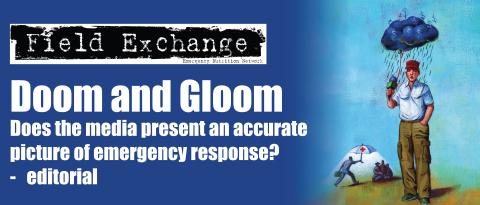Distribution of WFP food aid in West Darfur
Summary of research1

Receiving WFP food aid in West Darfur
In order to investigate the evolution of the humanitarian situation in Darfur, trends in nutritional status and mortality from 2004 to 2008 were analysed based on 164 publicly available surveys. Malnutrition prevalence and death rates were modelled taking into account changes in the contextual situation and humanitarian aid status of the population (resident and internally displaced persons (IDPs) and seasonal variations).
The results of the analysis showed that by the end of 2005, the humanitarian crisis had generally been contained. There was an overall yearly decrease of 16% in prevalence of global acute malnutrition (GAM) and a 28% decrease in prevalence of severe acute malnutrition (SAM) in 2004 and 2005. The decreases were homogeneous across all three states and populations. The decrease in the risk of dying was even more marked; the crude death rate dropped by between 44% and 75% per year, depending on the state and type of population, whilst the under-five death rate decreased by 50% each year. At the end of 2005, the risk of dying was below emergency thresholds for both the general population and for children under five years of age. However, the affected population continued to suffer under the combined effects of high levels of violence, deteriorating livelihood conditions and food shortages.
Both the security environment and the overall humanitarian context became increasingly complex after 2005. In addition to the main parties2 to the conflict, new rival factions with different motives emerged and incidents of banditry increased. Livelihood conditions had changed. Humanitarian aid workers and convoys were increasingly attached and harassed. Despite this, levels of malnutrition remained stable but SAM tended to increase for IDPs. This might be interpreted as an indication of the population's reduced ability to cope, although mortality rates remained stable. Mortality rates seemed to increase slightly for residents in South Darfur after 2005, even though the nutritional status was stable. This rise may be due to the increased levels of violence in South Darfur from the end of 2007 and throughout 2008.
At the end of the 2008 violence, armed assaults and banditry were still widespread. The security situation was becoming increasingly complex with the emergence of splinter rebel groups and other armed factions. The humanitarian situation remained fragile and signs of a forthcoming breakdown emerged. In view of this, the authors of the study concluded that it is important that the humanitarian situations continue to be closely monitored.
1Nielsen. J, Bandim Health Project and Statens Serum Institut (2009). Trends in nutrition and mortality from publically available surveys, Darfur, Sudan 2004-8. Commissioned by Health and Nutrition Tracking Service, WHO, October 2009.
2The two rebel groups (the Sudan Liberation Army and the Justice and Equality Movement) on the one hand and the Government of Sudan on the other.
Imported from FEX website


